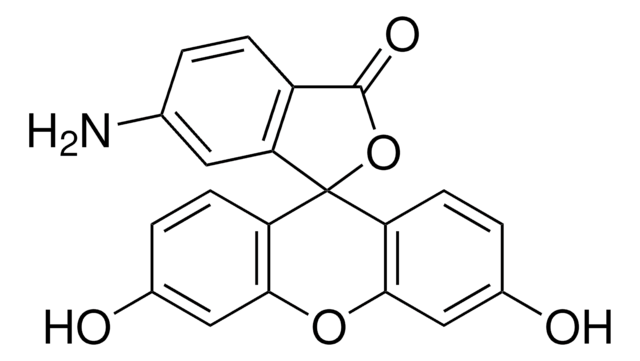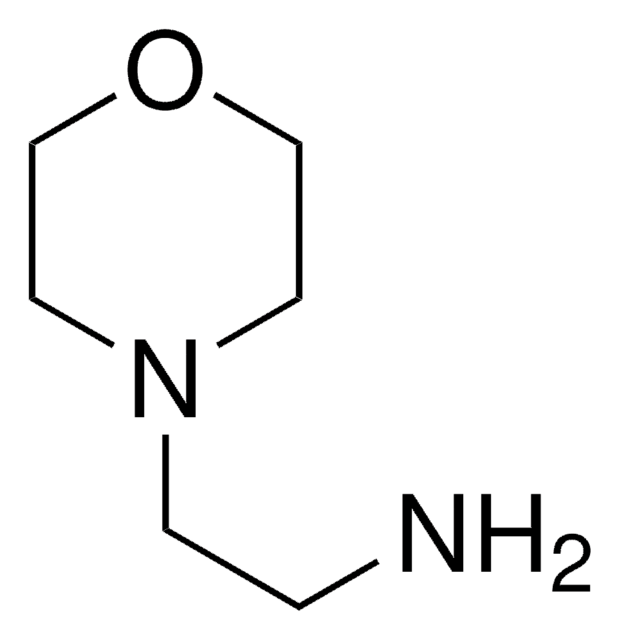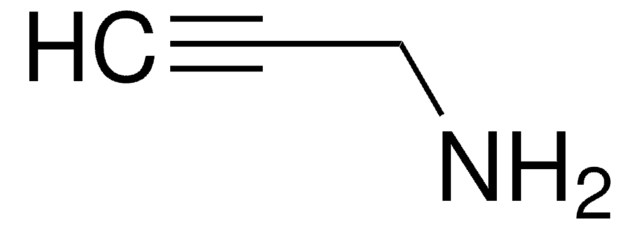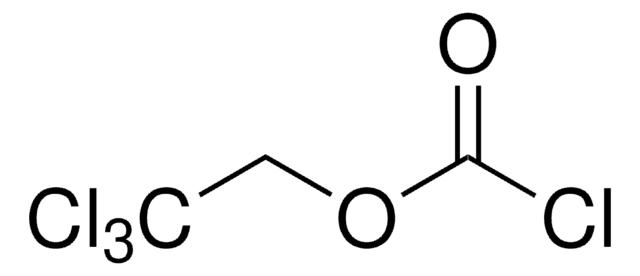201634
6-Aminofluorescein
Synonym(s):
Fluoresceinamine isomer II
About This Item
Recommended Products
form
powder
Quality Level
mp
285 °C (dec.) (lit.)
solubility
methanol: 1 mg/mL, clear, yellow to very dark yellow-orange
λmax
495 nm
application(s)
diagnostic assay manufacturing
hematology
histology
storage temp.
room temp
SMILES string
Nc1ccc2C(=O)OC3(c4ccc(O)cc4Oc5cc(O)ccc35)c2c1
InChI
1S/C20H13NO5/c21-10-1-4-13-16(7-10)20(26-19(13)24)14-5-2-11(22)8-17(14)25-18-9-12(23)3-6-15(18)20/h1-9,22-23H,21H2
InChI key
YOAWSYSKQHLFPM-UHFFFAOYSA-N
Looking for similar products? Visit Product Comparison Guide
Related Categories
Application
Other Notes
Storage Class
11 - Combustible Solids
wgk_germany
WGK 3
flash_point_f
Not applicable
flash_point_c
Not applicable
ppe
dust mask type N95 (US), Eyeshields, Gloves
Choose from one of the most recent versions:
Already Own This Product?
Find documentation for the products that you have recently purchased in the Document Library.
Our team of scientists has experience in all areas of research including Life Science, Material Science, Chemical Synthesis, Chromatography, Analytical and many others.
Contact Technical Service








